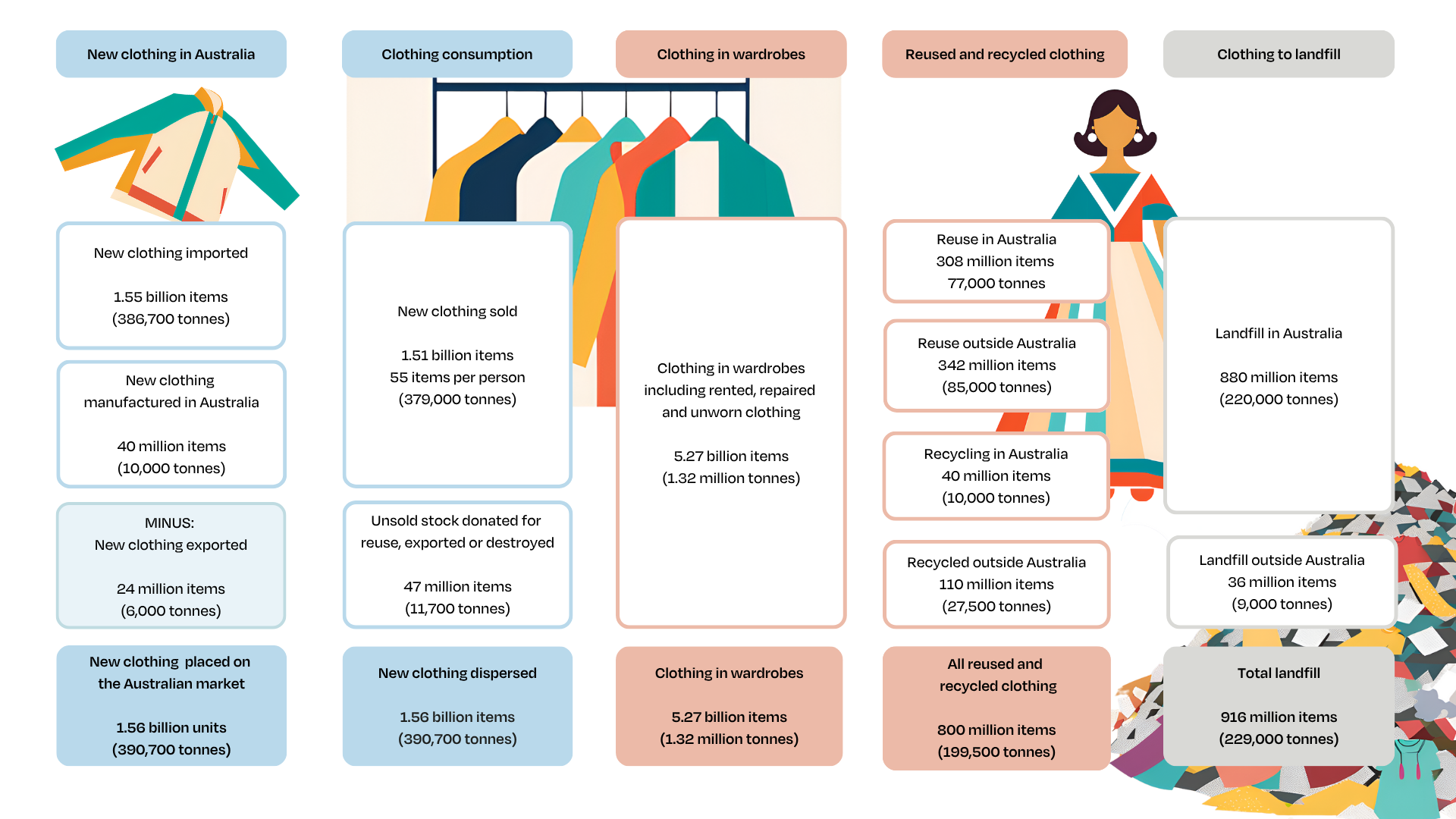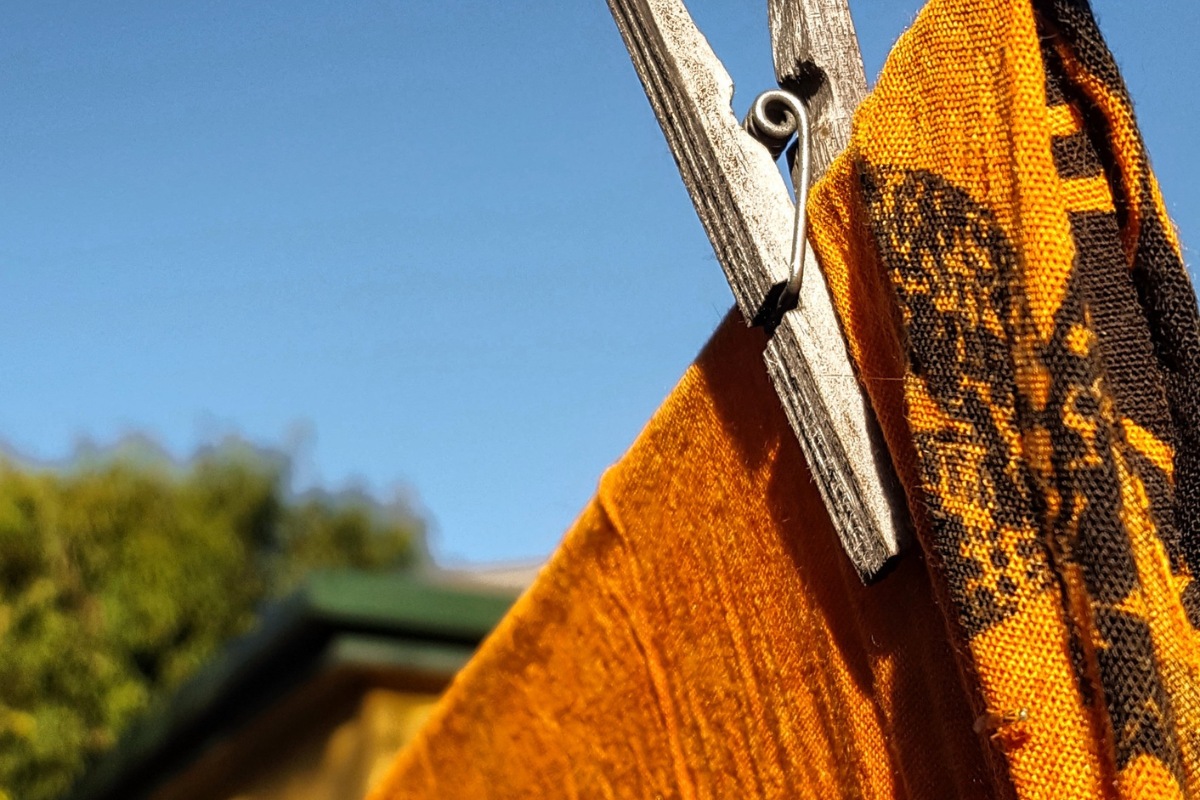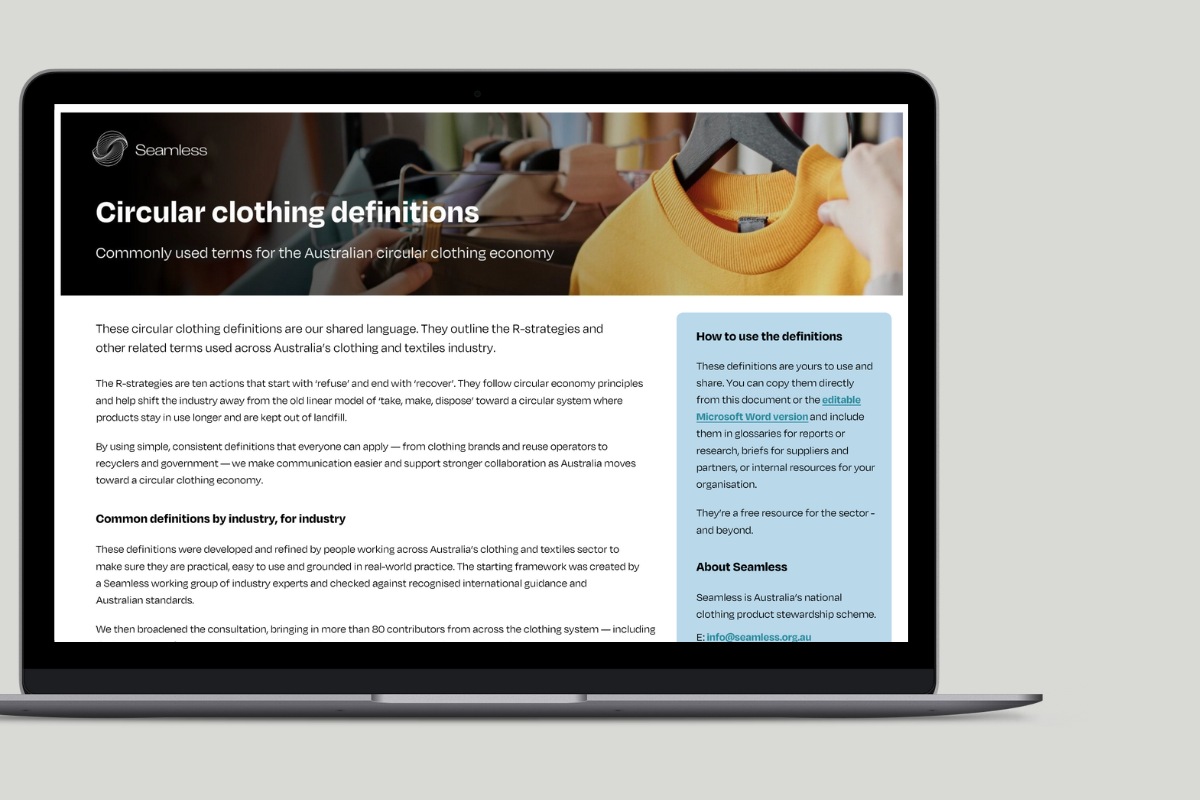The Seamless national clothing benchmark for Australia tells the story of what happened to our clothes in 2024. It’s the baseline for measuring our progress towards a circular clothing economy.
In 2024, Australians added more clothing to their wardrobes than ever before. We bought 6% more new clothing compared to 2023, while there was also a 10% increase in the sale or sharing of second hand clothing. While our wardrobes are filling fast, so is Australian landfill. In 2024, we sent 220,000 tonnes of clothing to Australian landfill – an amount which has barely changed since last year.
While many organisations are making progress and Australians are increasingly buying second hand clothing, systemic change is urgently needed to transform to a circular clothing sector and significantly reduce the amount of clothing in landfill. This change can only happen when government, clothing brands, retailers and the industry collaborate and join forces.
Download the Seamless 2024 National Clothing Benchmark for Australia
Australians bought more new clothing in 2024
In 2024, 1.51 billion items of clothing were sold in Australia, which equates to 55 items of clothing for every Australian. This is a 6% increase from 2023, when 1.42 billion items were sold. Compared to 2018, before the impact of the COVID pandemic on retail trade, this is a 6% decrease on the 1.6 billion items sold that year.
More and more clothing is remaining unsold
1.55 billion items of clothing were imported into Australia in 2024, which is a 7% increase from 2023. 47 million of these items were not sold, which is a 17% increase from 2023. This presents an opportunity for clothing brands and retailers to reduce costs and increase efficiency through streamlined processes which better match supply to demand.
More than ever, Australians are selling, swapping and sharing clothing
In 2024, the amount of clothes being reused, that is donated, sold, swapped, shared and therefore worn by another person, increased by 10% compared to 2023, to 650 million items. In Australia, local clothing reuse increased by 10% to 308 million garments in 2024. That equates to 11 second hand items of clothing for every Australian.
Australians are adding more to their wardrobes
The increase in new and second hand clothing being acquired by Australians, means we’re adding more to our wardrobes than ever before. In 2024, 5.27 billion items of clothing, or 1.32 million tonnes were held in our wardrobes, which equates to 193 items for every Australian.
More clothes are being recycled
When clothing does leave our wardrobes, it is increasingly being recycled. In 2024, 7% more clothing was recycled compared to 2023, either within Australia or internationally. This equates to approximately 150 million garments, or 37,500 tonnes. When we compare this to 2018, it’s a 15% increase.
We’re still sending over 200,000 tonnes of clothing to Australian landfill annually
Despite the progress we’re making in recycling and reusing our clothes, we still sent 220,000 tonnes to landfill in Australia in 2024, which is 880 million items of clothing. This is equivalent to over half (59%) of all of the clothes imported. In addition, it is estimated that 9,000 tonnes was sent to landfill outside Australia. Overall, the amount of clothing ending up in landfill decreased by just 1% compared to 2023.

The baseline for advancing Australia’s circular clothing economy
The Seamless national clothing benchmark for Australia is the baseline to measure our progress towards a circular clothing sector. Sharing transparent data about what happens to our clothes also means we can work together to fill the remaining data gaps.
It’s clear that while clothing reuse and recycling is growing, both policy and investment strategies need to change to rapidly scale collection, sorting, and recycling infrastructure to the level required. A national system for collecting, sorting, reusing and recycling clothing is critical for Australia’s transition to a circular clothing economy by 2030 and the diversion of 220,000 tonnes of clothing from Australian landfill annually.
Importantly, equitable participation in product stewardship is essential for enabling the system-level change we need. All clothing brands, whether they are large or small, Australian or international, must contribute fairly and meaningfully to address Australia’s clothing waste.





